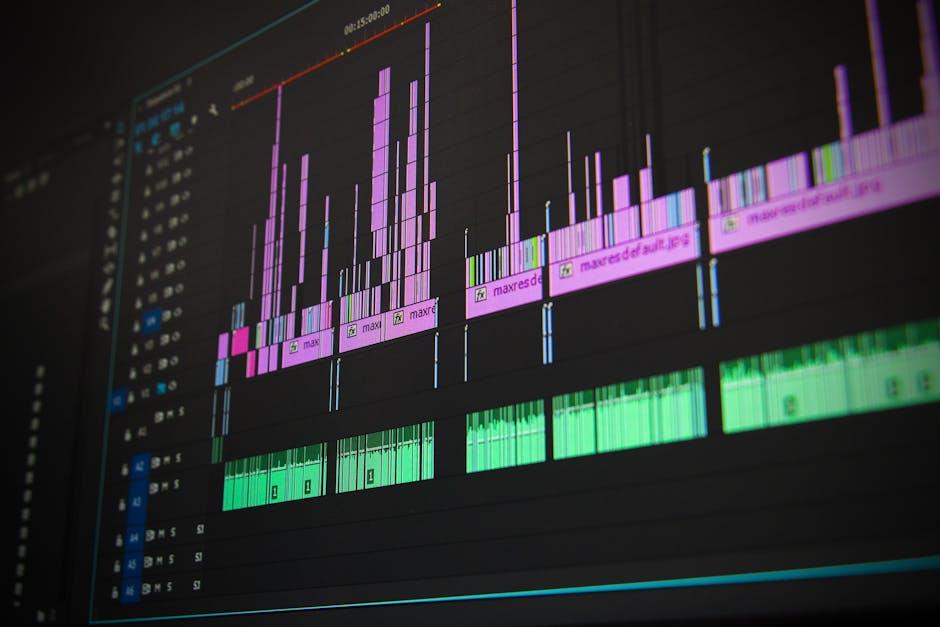Editing for Multi-Platform Distribution Without Losing Impact
In today’s digitally fragmented world, creating content that resonates across multiple platforms is no longer a luxury – it’s a necessity. Whether you’re a content creator, marketer, or video editor, the challenge lies in adapting your content for different social networks, websites, and devices without losing the original impact. This comprehensive guide will help you master editing for multi-platform distribution effectively, maintaining quality, engagement, and accessibility.
Why Editing for Multi-Platform Distribution Matters
Every platform has unique audience behaviors, formats, and technical requirements. For example, Instagram prefers short, engaging videos with subtitles, while YouTube favors longer-form, educational content. Editing your content accordingly maximizes viewer retention, enhances SEO, and improves brand consistency across channels.
- Reach a broader audience: Optimized editing helps tailor content to diverse viewers.
- Enhance engagement rates: Platform-specific tweaks can increase likes, shares, and comments.
- Boost SEO performance: Adapted metadata and structure improve search engine rankings.
- Maintain brand integrity: Consistent visuals and tone across platforms build trust.
Key Challenges When Editing for Multiple Platforms
While multi-platform distribution unlocks many opportunities, several editing challenges must be addressed to avoid diluting your message:
- Varying Aspect Ratios and Resolutions: Instagram Stories require vertical videos (9:16), while LinkedIn prefers horizontal (16:9).
- Length Restrictions: Twitter allows only 2 minutes 20 seconds for videos, yet YouTube videos often exceed 10 minutes.
- Diverse Audience Expectations: Tone and pacing might differ between platforms like TikTok and professional LinkedIn posts.
- File Size and Compression Issues: Upload quality can degrade due to platform-imposed compression.
Practical Tips for Effective Editing Without Losing Impact
To successfully edit content for multi-platform distribution, follow these best practices to preserve your message and maximize quality:
1. Understand Your Audience and Platform
Analyze your target demographic on each platform and adapt your content tone and style accordingly. For example, create snappier clips for TikTok and more in-depth tutorials for YouTube.
2. Use Flexible Editing Software and Project Files
Editing software like Adobe Premiere Pro, Final Cut Pro, or DaVinci Resolve allow you to save project files with sequences optimized for different ratios and lengths, reducing redundant rework.
3. Start with the Highest Quality Master
Always keep a high-resolution master file. From this, create versions tailored for each platform but retain original audio and visuals for best results.
4. Optimize Aspect Ratios and Framing
Use cropping, scaling, or repositioning to fit content into required aspect ratios – for example, switching from 16:9 widescreen to 1:1 square without cutting crucial details.
5. Adapt Video Lengths Creatively
- Trim: Remove non-essential parts for short-form platforms.
- Add: Insert intro/outro or call-to-actions for longer formats.
- Use Chapters: Break content into digestible sections for platforms supporting timestamps.
6. Prioritize Audio and Captions
Clear audio is crucial. Add subtitles or captions, especially for silent autoplay videos on social media to maintain engagement and accessibility.
7. Maintain Branding Elements Consistently
Keeps logos, colors, and fonts consistent but tweak placements or sizes to fit different layouts.
Comparing Editing Requirements Across Popular Platforms
| Platform | Preferred Aspect Ratio | Max Video Length | Key Editing Focus | File Size Limits |
|---|---|---|---|---|
| YouTube | 16:9 (widescreen) | No limit (recommended 10+ min) | High resolution, engaging thumbnail | 128 GB or 12 hours max |
| Instagram Stories & Reels | 9:16 (vertical) | 60 seconds (Stories), 90 seconds (Reels) | Fast pace, subtitles, vertical framing | 4 GB |
| 16:9 or 1:1 | 240 minutes | Captions, engaging intro | 10 GB | |
| 16:9 | 10 minutes | Professional tone, clear CTA | 5 GB | |
| 16:9 | 2 minutes 20 seconds | Concise, captivating start | 512 MB |
Case Study: How One Brand Boosted Engagement by Multi-Platform Editing
Brand: GreenLeaf Wellness
Challenge: GreenLeaf aimed to promote their new herbal product line via video content but noticed low engagement on Instagram compared to YouTube.
Solution: They created a master video highlighting product benefits, then edited it into:
- A 30-second vertical reel with subtitles and upbeat music for Instagram.
- A detailed, 12-minute educational video for YouTube with a professional voiceover.
- A crisp 2-minute professional overview for LinkedIn emphasizing business benefits.
Result: After implementing tailored edits, GreenLeaf saw:
- Instagram engagement increased by 65%
- YouTube watch time increased by 40%
- LinkedIn viewer retention improved by 50%
Bonus Tips: Tools and Resources to Simplify Multi-Platform Editing
- Video Editing Software: Adobe Premiere Pro, Final Cut Pro, DaVinci Resolve
- Captioning Tools: Rev.com, Kapwing, VEED.io
- Aspect Ratio Templates: Canva video templates, Envato Elements presets
- Analytics Platforms: Google Analytics, Facebook Insights, YouTube Studio
Conclusion
Editing for multi-platform distribution doesn’t mean compromising your content’s quality or message impact. By understanding each platform’s unique demands, leveraging flexible editing workflows, and applying tailored optimizations, you can create highly effective content that shines everywhere. Whether you’re a freelancer, marketer, or in-house creator, these strategies will empower you to maximize reach, engagement, and brand consistency with every publish.
Ready to make your content truly unstoppable? Start adapting smartly today and watch your audience grow across all the platforms that matter.











